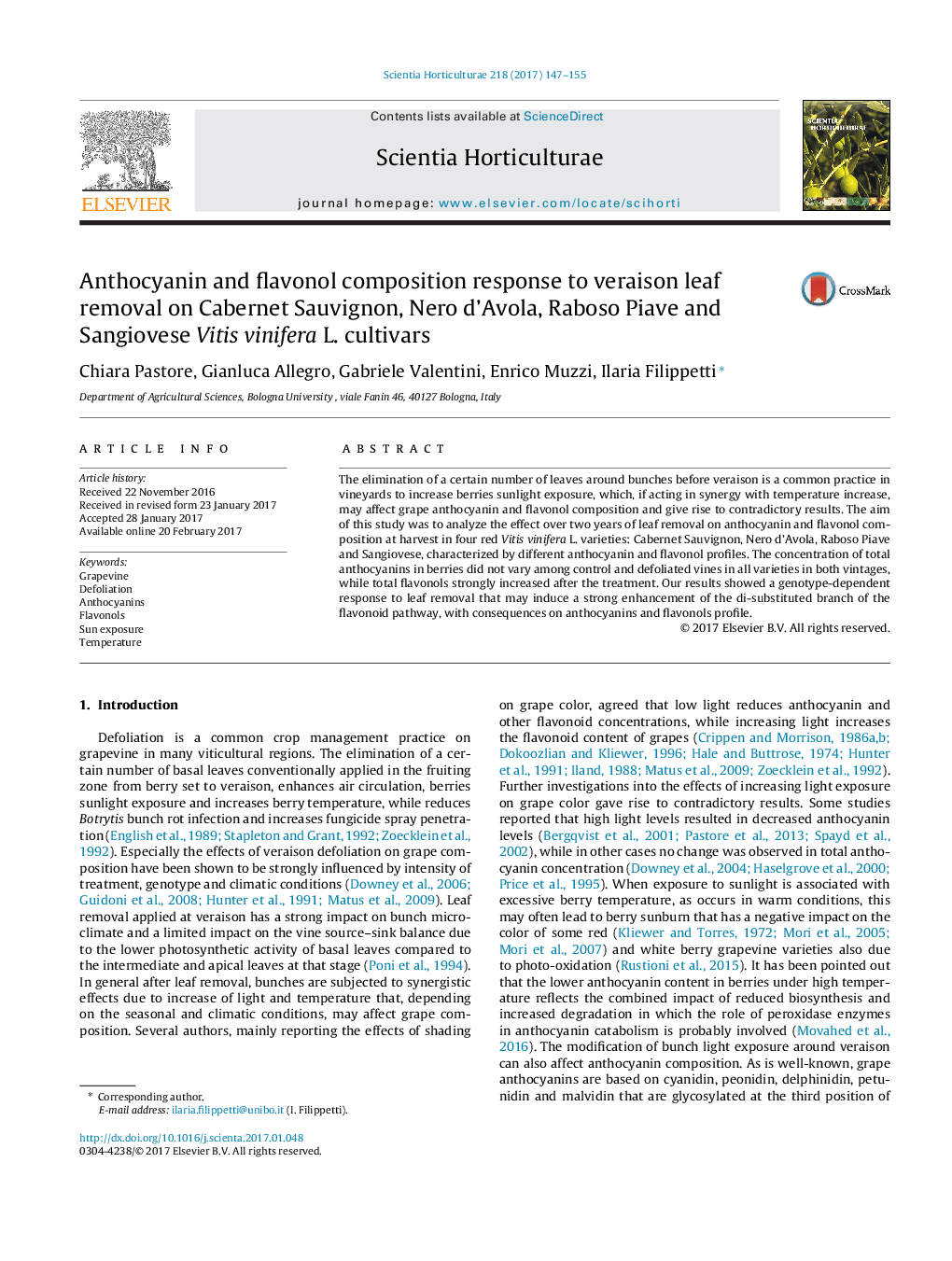| Article ID | Journal | Published Year | Pages | File Type |
|---|---|---|---|---|
| 5769538 | Scientia Horticulturae | 2017 | 9 Pages |
â¢Effect of veraison defoliation on flavonoid in four Vitis vinifera cvs is evaluated.â¢Flavonols and anthocyanins respond differently to light bunch exposure.â¢Changes in both flavonols and anthocyanins profile were detected according variety.â¢Defoliation triggers the synthesis of di-substituted branch of flavonoid patterns.
The elimination of a certain number of leaves around bunches before veraison is a common practice in vineyards to increase berries sunlight exposure, which, if acting in synergy with temperature increase, may affect grape anthocyanin and flavonol composition and give rise to contradictory results. The aim of this study was to analyze the effect over two years of leaf removal on anthocyanin and flavonol composition at harvest in four red Vitis vinifera L. varieties: Cabernet Sauvignon, Nero d'Avola, Raboso Piave and Sangiovese, characterized by different anthocyanin and flavonol profiles. The concentration of total anthocyanins in berries did not vary among control and defoliated vines in all varieties in both vintages, while total flavonols strongly increased after the treatment. Our results showed a genotype-dependent response to leaf removal that may induce a strong enhancement of the di-substituted branch of the flavonoid pathway, with consequences on anthocyanins and flavonols profile.
